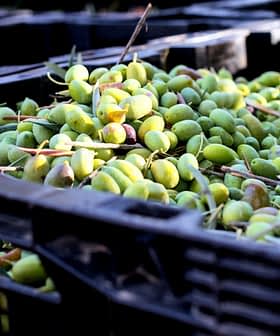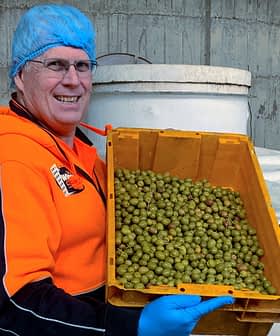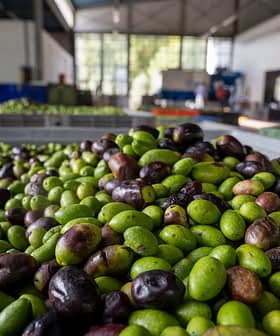Native Andalusian Olive Varieties Could Be Wiped Out by 2100, Researchers Warn
Six of seven varieties studied are expected to have less land suitable for their cultivation. Picual is the exception.
A study from the University of Córdoba, CICGE, and the University of Porto predicts a decrease in land suitable for olive cultivation in Andalusia over the next 80 years, with traditional producers facing the greatest impact, while the Picual variety is expected to see an increase in suitable areas. Researchers used species distribution modeling to determine that most olive varieties will have less land available for cultivation due to the region’s increasingly hot and dry climate, which could lead to conflicts between different types of crops and impact the local economy.
The amount of land suitable for olive cultivation will steadily decrease in Andalusia over the next 80 years, according to a study from the University of Córdoba, the Center for Research in Geo-Space Sciences (CICGE) and the University of Porto.
While the Picual variety — which is used to produce nearly one-third of the world’s olive oil — and intensive farms will be impacted the least, traditional producers who grow narrowly-distributed olive varieties associated with protested designations of origin (PGIs and PDOs) could be wiped out.
There will be a reduction in the area available for cultivation of most of the olive varieties studied.
Using a tool known as species distribution modelling (SDM) to predict areas suitable for certain species to survive and thrive based on environmental characteristics, the researchers found that Andalusia’s increasingly hot and dry climate is driving the reduction.
“The study reveals that there will be a reduction in the area available for cultivation of most of the olive varieties studied,” Salvador Arenas-Castro, a researcher at CIGCE, said. “It will be mainly due to the decrease in rainfall and the loss of soil moisture.”
See Also:Climate Change NewsArenas-Castro and his colleagues created models for seven olive varieties and wild olive trees, using eight predictive variables. They found that six of the varieties along with wild olives would have substantially less land suitable for their cultivation by the end of the century.
“Except for Picual, for which there was an increment in a suitable area for the future scenarios, the future suitable areas predicted for each variety were significantly smaller than the current ones,” the researchers wrote. The land suitable for growing Picual, on the other hand, is expected to increase by 25 percent by 2100.
“This situation endangers traditional varieties, a source of genetic diversity that might be very useful under new and unforeseen scenarios of climate change, diseases or pests, or to obtain new varieties of olive trees adapted to the new and innovative cultivation techniques,” the researchers added.
The Lechín, Manzanilla, Nevadillo, Hojiblanco and Picudo varieties are expected to have a 100 percent decrease in suitable cultivation land area by 2100. The Acebuche and Verdial varieties are expected to experience a decrease of 72 percent and 22 percent, respectively, over the same time period.
Arenas-Castro warned that the potential loss of olive varieties would have a range of consequences for both the land and the people farming it.
“Most of these endemic varieties are grouped within the type of olive cultivation called ‘traditional’ that are more related to remote areas or difficult-to-access mountain areas, which in turn are less productive,” he told Olive Oil Times.
“This type of crop, ahead of the intensive or super-intensive, harbors not only an interest from the agroecological viewpoint (for the associated biodiversity it hosts) but also from the socioeconomic context and at a more local scale since it represents the sustenance of the economy of regions that would hardly have access to other types of land management,” Arenas-Castro added.
Nearly every olive-growing province in Andalusia will be impacted with significant decreases predicted in Cádiz, Córdoba, Huelva, Málaga and Sevilla. Jaén is expected to be largely unaffected while the mountainous regions of Granada and Almería will become increasingly habitable for Picual olives.
Andalusia’s changing climate is also likely to lead to a decrease in the overall quantity of arable land in the autonomous community. As crop distribution steadily changes over the century, those that have not traditionally overlapped may begin to do so, which could bring farmers into conflict.
“Changes in the environmental areas of this crop would affect its redistribution to other areas, and may conflict with other types of crops that are currently being used, such as cereals, and therefore causing potential conflicts,” Arenas-Castro said.
“In this sense, knowing the possible changes that may occur in the near future due to loss of potentially arable environmental area, or redistribution of the crop, and therefore overlapping with other crops, allows these dynamics to be anticipated in decision-making,” he added.
Arenas-Castro hopes the models can be used by local governments to begin planning for the future. He believes that additional studies should be undertaken to identify olive varieties with similar attributes to Picual which may be able to thrive in Andalusia in the future.
“This modeling framework allows us to predict potential changes in the relocation of environmental areas for olive varieties, which in turn means that this ‘early-warning system’ is very useful to mitigate the effects of these changes,” he said. “Therefore, considering that the predictions are made in the medium-to-long term, I think that the olive growers, but much more the policymakers, have enough time to take action.”









